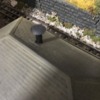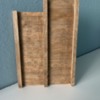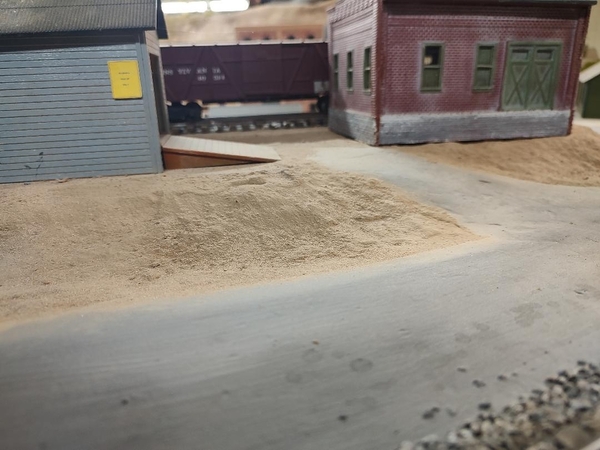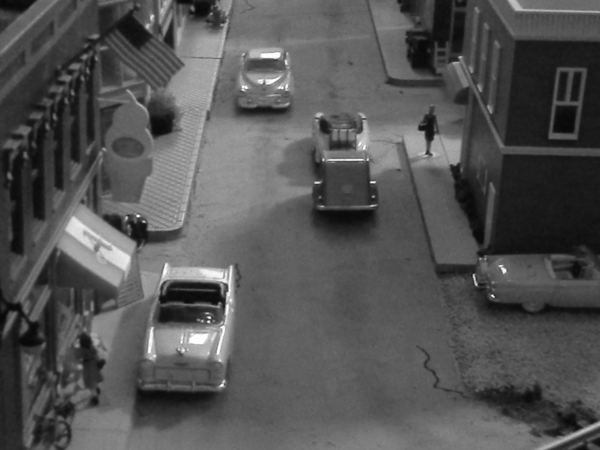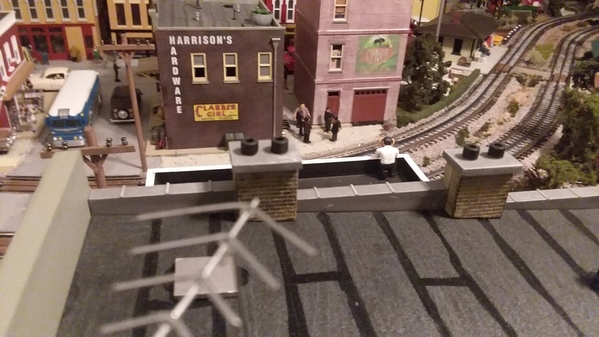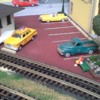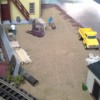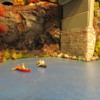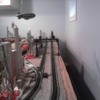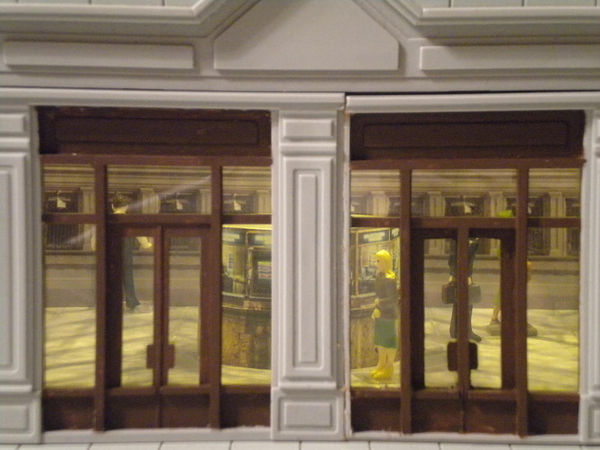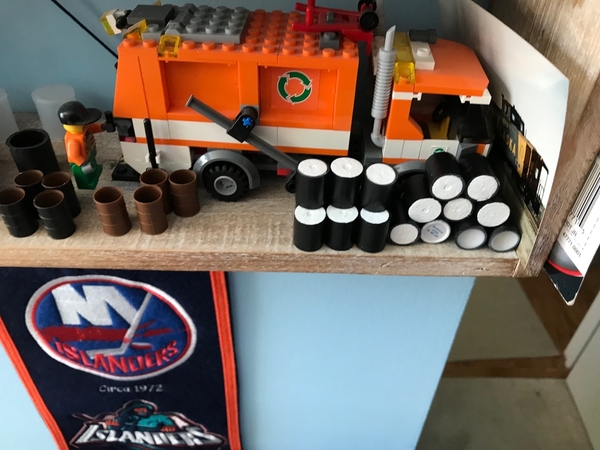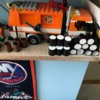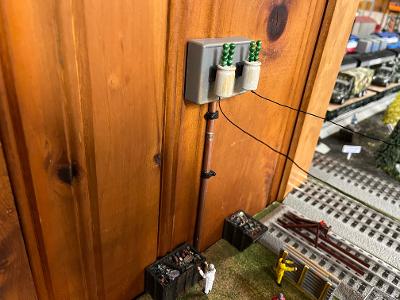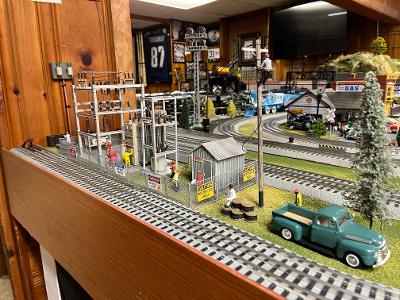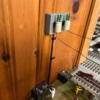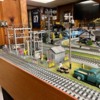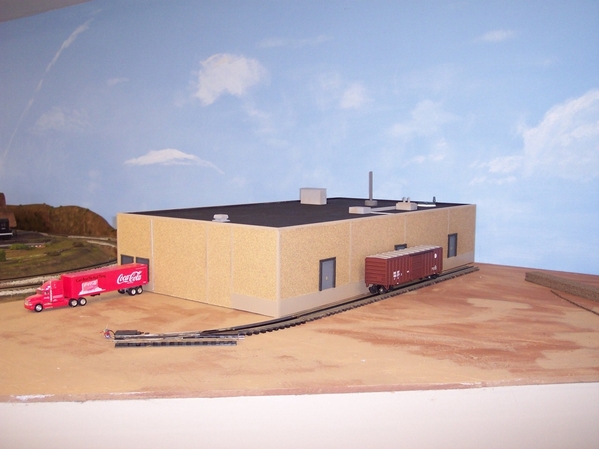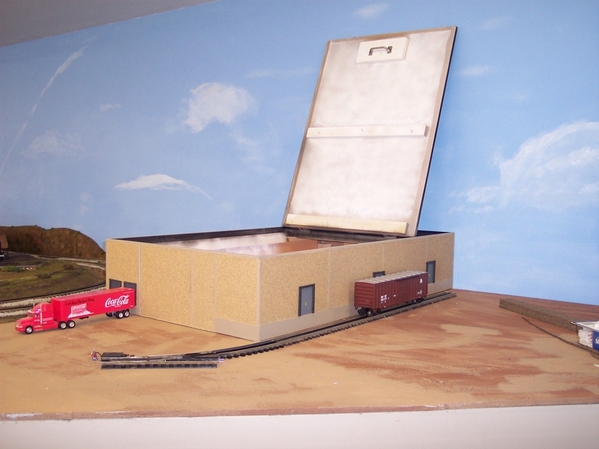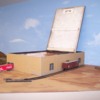I'm a big fan of Woodland Scenics, Scenic Express, and similar senery-related vendors, but I also find it satisfying to use things I find around the house, in the yard, along the road, in a park, wherever, for scenery and structures on my layout.
Here is an example:
The above photo shows asphalt pebbles, which I found along the road, and which I placed loose between, and along the sides of, the rails of my hi-rail O Gauge tubular track.
I sifted the asphalt pebbles through a strainer to eliminate the dust and tiny bits of rock.
I've had this homemade ballast for over 20 years and, although it is unglued and loose, it has never gotten into the gears, or messed up the mechanism, of any of my locomotives.
I also find that this ballast helps stabilize the track.
What do you think of it?
Also, if you are so inclined, you can share on this thread the everyday stuff you have used for scenery and structures on your layout.
Arnold








